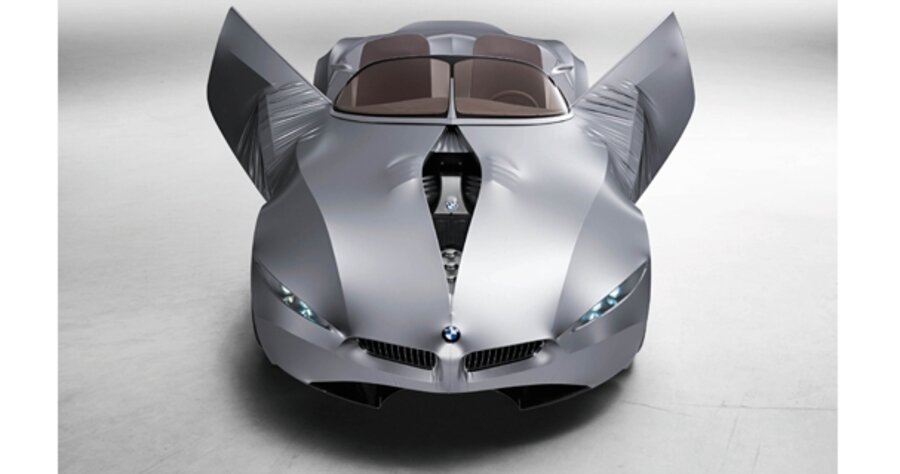Why people like cars with 'angry faces'
One of the coolest aspects of the fabric-covered BMW GINA concept car is a little subconscious. I'm sure I was not the only person who felt, at first sight, as though the car were glaring at me. The sharp hood resembles an angry robot staring you down with its icy eyes. This cyborg look gives the BMW model a futuristic style – something far more appealing than the silly grin of a Toyota Prius. (Check out its smiling mug on the second picture above. Don't you see it?)
Humans personify a lot of things. We see silhouettes of celebrities in our potato chips. We spot characters in the clouds. And, yes, we imagine that cars have faces. There's a word for this weird desire to find significance where there really isn't any: pareidolia.
A European research firm released some highlights from its continuing study on how these perceived faces affect a vehicle's desirability. The consensus: The angrier the car, the more we want it.
Now EFS Consulting Vienna is drilling deeper into the phenomenon to see if these "faces" are universal and if automakers can take advantage of them to make more attractive automobiles.
The firm sat down 20 men and 20 women and asked them to evaluate 38 vehicles. All the models were passenger cars from the past few years – they left out SUVs, fearing that their size and gas-guzzling reputation would affect the scores.
"Study participants assessed cars based on a system known as geometric morphometrics (GM), which allowed the men and women to rate certain traits on a sliding scale (such as 'infancy' to 'adulthood')," reports LiveScience. "The traits represented maturity, sex, attitudes, emotions, and personality — all things that people infer from human faces at a single glance. After rating car traits, participants then answered the question of whether they saw a human face, animal face or no face at all on the cars. They drew facial features such as eyes, nose and mouth on the car images whenever they did see faces."
In the final round, the researchers asked how much the participants liked the cars. The big winners were vehicles with faces that portrayed "power." This mostly meant "lower or wider" cars with "slit-like or angled headlights."
A carmaker offered to the buy the study, according to EFS head Truls Thorstensen. But they say their work isn't done yet.
The next step: eye-tracking to follow how participants look at cars, and maybe conducting the tests again in Ethiopia, where people are less familiar with Western models.





